Previous Paper
IGNOU B.Ed. Entrance Test 2008
PART-A
SECTION-I: GENERAL COMPREHENSION
Directions (Qs. 1 to 10): Read the following passage carefully and pick out the best answer out of the four choices given in the questions that follow.
A duty is an obligation. It is something we owe to others as social beings when we live together. We must let others live with us. My right of living implies my duty to my fellow beings to allow them the same conditions of life. In fact, rights and duties are correlated. What is a right in regard to one may be a duty in regard to one may be a duty in regard to others. Rights and duties are two sides of the same coin. We should always observe from the standpoint of others. Moral duty is more effective than legal rights. A moral duty is that which is binding upon the people in moral grounds. It is my moral duty to help the poor because of being a member of the society.
I must try to create conditions that contribute to the welfare of humanity. Similarly, I owe a duty to my parents-to be obedient and respectful to them. This duty originates from the sense of responsibility which is directly related to our conscience. So this is concerned with a moral duty which any person owes without a legal bondage.
A sense of duty is paramount for the proper development of civilization. Hypocrisy is quite reverse to the sense of duty. It involves wickedness, while duty involves sincerity and faithfulness.
1. According to the passage, rights and duties are-
(A) Two sides of the same coin
(B) Correlated
(C) Both (A) and (B)
(D) Neither (A) nor (B)
2. According to the passage legal duty is-
(A) More important than moral duty
(B) Less important than moral duty
(C) More effective than moral duty
(D) Less effective than moral duty
3. Duty comes from-
(A) Responsibility
(B) Legal bondage
(C) Hypocrisy
(D) None of the above
4. Which of the following is not correct according to the passage?
(A) Hypocrisy involves wickedness
(B) Hypocrisy is opposed to duty
(C) Duty involves sincerity
(D) Sense of duty is not important for the development of civilization
5. Which of the following moral duties has not been mentioned in the passage?
(A) Moral duty towards our motherland
(B) Moral duty towards our parents
(C) Moral duty towards the poor
(D) Moral duty to contribute to the welfare of humanity
6. Which of the following is not related to moral duty?
(A) Sense of responsibility
(B) Conscience
(C) Hypocrisy
(D) Sincerity
7. Why is it a duty to help the poor?
(A) Because I am poor
(B) Because I am rich
(C) Because I belong to the society
(D) Because God wants this
8. Why should I be obedient and respectful to my parents?
(A) Because of my sense of responsibility
(B) Because of legal bonding
(C) Because of civilization
(D) Because of hypocrisy
9. “We should always observe from the standpoint of others. “This is a-
(A) Simple sentence
(B) Complex sentence
(C) Compound sentence
(D) Phrase
10. The word ‘always’ in “We should always observe from the standpoint of others” is a/an-
(A) Adverb
(B) Adjective
(C) Noun
(D) Verb
SECTION II: LOGICAL AND ANALYTICAL REASONING
Directions (Qs. 11 to 14): In each of the following questions are incomplete series of numbers, with one blank is given, identify the missing member from the given alternatives.
11. 1, 27, 125, …..?….. 729
(A) 242
(B) 314
(C) 307
(D) 343
12. 2, 5, 10, 50, 500, ……?……
(A) 25000
(B) 560
(C) 550
(D) 540
13. 3, 14, 47,…….?……. 443, 1334
(A) 61
(B) 89
(C) 146
(D) 445
14. 2, 9, 30, 93, 282, …..?……
(A) 849
(B) 846
(C) 649
(D) 746
Directions (Qs. 15 to 18): In each of the following questions there are five groups of letters. First is the primary one, followed by four; out of which one is different from the rest. Identify this odd member.
15. IIJL
(A) QQSV
(B) EEFH
(C) AABD
(D) MMNP
16. ABAC
(A) BCBD
(B) PRPQ
(C) CDCE
(D) STSU
17. BXTP
(A) OKGC
(B) DZVR
(C) XTOK
(D) EAWS
18. DINS
(A) HMSX
(B) FKPU
(C) JOTY
(D) NSXC
19. Which pair is different in some way from others in the following pairs?
(A) Bottle and ink
(B) Can and oil
(C) Bag and clothes
(D) Boat and ship
Directions (Qs. 20 to 24): In each of the following questions there are five figures. First is a reference figure. Among the answer figures one figure does not belong to the class to which the first figure belongs. Identify this odd figure.
20. 
(A) 
(B) 
(C) 
(D) 
21. 
(A) 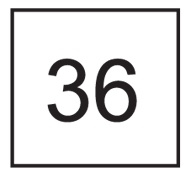
(B) 
(C) 
(D) 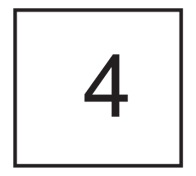
22. 
(A) 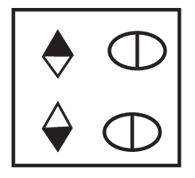
(B) 
(C) 
(D) 
23. 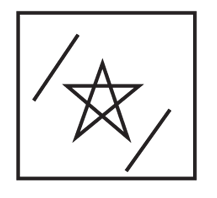
(A) 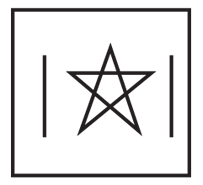
(B) 
(C) 
(D) 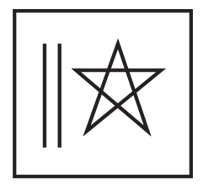
24. 
(A) 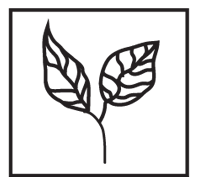
(B) 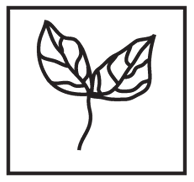
(C) 
(D) 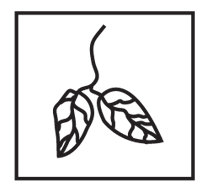
Directions (Qs. 25 to 28): In each of the following questions two statements are followed by two conclusions. Assuming that the two given statements are true (however absurd they may be) decide which of the two conclusions follows strictly from the given statements. Select the most appropriate alternative.
25. All men are chairs.
All animals are chairs.
Conclusions:
I. All men are animals.
II. No animal is a man.
(A) Only I follows
(B) Only II follows
(C) Both I and II follow
(D) Neither I nor II follows
26. Buckets are means of transport.
Stairs are means of transport.
Conclusions:
I. Buckets are stairs.
II. Some stairs are buckets.
(A) Only I follows
(B) Only II follows
(C) Both I and II follow
(D) Neither I nor II follows
27. No bird has wings.
All birds are rational.
Conclusions:
I. Some rationals have wings.
II. Wingless are birds.
(A) Only I follows
(B) Only II follows
(C) Both I and II follow
(D) Neither I nor II follows
28. All philosophers are rational people.
Some rational people are happy.
Conclusions:
I. Some happy people are philosophers.
II. Some happy people are rational.
(A) Only I follows
(B) Only II follows
(C) Both I and II follow
(D) Neither I nor II follows
29. Which is the fourth letter to the left of the letter that is mid-way between ‘O’ and ‘P’ in ‘CARDIOGRAPH’?
(A) D
(B) I
(C) O
(D) R
30. Which is the odd term in the following list?
(A) January
(B) May
(C) April
(D) August
SECTION III : EDUCATIONAL AND GENERAL AWARENESS
31. Ganpati festival was started by-
(A) Jyotiba Phule
(B) Gopal Krishna Gokhale
(C) M. G. Ranade
(D) Bal Gangadhar Tilak
32. The name ‘Indian National Congress’ was given by-
(A) S. N. Banerjee
(B) Feroz Shah Mehta
(C) Dadabhai Naoroji
(D) M. G. Ranade
33. German Silver is the alloy combination of-
(A) Copper, Zinc and Nickel
(B) Copper, Aluminium and Nickel
(C) Chromium, Nickel and Mercury
(D) Copper, Lead and Chromium
34. Who is considered the ‘Guardian of Public purse’?
(A) President
(B) Parliament
(C) Comptroller and Auditor General
(D) Public Accounts Committee
35. Where is Nandapa Wildlife Sanctuary?
(A) Andhra Pradesh
(B) Arunachal Pradesh
(C) Himachal Pradesh
(D) Madhya Pradesh
36. Which of the following committees on education is considered as the Magna Carta of English Education in India?
(A) Wood’s Despatch
(B) Raleigh Commission
(C) Saddler Commission
(D) Hunter Commission
37. Who said- “Patriotisim is religion and religion is love for India”?
(A) Swami Vivekananda
(B) Raj Naraine Bose
(C) Bal Gangahdar Tilak
(D) Bankim Chandra Chatterjee
38. The famous “Kirtistambha’ at Chittor was built by-
(A) Rana Pratap
(B) Rana Kumbha
(C) Rana Hammir
(D) Rana Sangram Singh
39. Gold coins in India were first introduced by-
(A) Sakas
(B) Parthians
(C) Indo-Greeks
(D) Kushans
40. Light year is the unit of-
(A) Time
(B) Distance
(C) Light
(D) Intensity of light
41. Which of the following is known as ‘morning star’?
(A) Venus
(B) Mars
(C) Jupiter
(D) Saturn
42. All the following foods lack vitamin C, except-
(A) Rice
(B) Meat
(C) Cheese
(D) Milk
43. The fourth state of matter is-
(A) Super fluids
(B) Small particles suspended in the gas
(C) Liquid crystals
(D) Plasma
44. The leading producer of coffee in the world is-
(A) Turkey
(B) Brazil
(C) Venezuela
(D) Cuba
45. The Bhutia group of languages does not include-
(A) Ladakhi
(B) Tibetan
(C) Lepcha
(D) Sherpa
46. The largest producer of sugarcane in India is-
(A) Andhra Pradesh
(B) Gujarat
(C) Punjab
(D) Uttar Pradesh
47. Which of the following matchings is wrong?
(A) Vijayawada-Narmada
(B) Lucknow-Gomti
(C) Badrinath-Alaknanda
(D) Ayodhya-Saryu
48. The first nuclear reactor of India was named as-
(A) Urvashi
(B) Rohini
(C) Kamini
(D) Apsara
49. Fundamental right to education has been brought through-
(A) 83rd Constitution (Amendment) Act
(B) 86th Constitution (Amendment) Act
(C) 93rd Constitution (Amendment) Act
(D) 96th Constitution (Amendment) Act
50. Integrated Child Development Scheme (ICDS) caters to-
(A) Early Child care and Education alone
(B) Early Child care and Education with five other components
(C) Early Child care and Education with four other components
(D) Early Child care and three other components
51. Education Commission in independent India which focused on Secondary Education was chaired by-
(A) Dr. D. S. Kothari
(B) A. Lakshmiswami Mudaliar
(C) Dr. S. Radhakrishnan
(D) Triguna Sen
52. Education Commission in pre-independence India which comprehensively covered all aspects of education is known as-
(A) Saddler Commission
(B) Hunter Commission
(C) Sargent Plan
(D) Abbot-Wood Report
53. Tarachand Committee provided recommendations on-
(A) Student’s Unrest
(B) Religious and Moral Education
(C) Vocationalisation of Education
(D) Secondary Education
54. State expenditure of 6 per cent of G.D.P. was recommended by-
(A) Kothari Commission (1966)
(B) National Education Policy (1968)
(C) National Policy on Education (1986)
(D) Review Committee on NPE (1986)
55. The latest National Curriculum Framework by NCERT came into existence in-
(A) 2000
(B) 2004
(C) 2005
(D) 2006
SECTION IV: TEACHING-LEARNING AND THE SCHOOL
56. What would be your approach if a student interrupts in your class?
(A) You will ask him to leave the class
(B) You will ask him to behave properly
(C) You will assess his reasons to do the same
(D) You will give him extra home-work
57. How would you prefer to address a student who has not completed his home-work?
(A) When you are going to complete it?
(B) You did not do it. Try it
(C) Why did you not complete it?
(D) You better ignore it now
58. Schools should be concerned with the development of child, which should include-
(A) Acquisition of knowledge by the child
(B) Acquisition of life-skills by the child
(C) Acquisition of skills required by the nation
(D) Acquisition of skills required by a healthy person
59. The main reason for non-achievement of full literacy in India is-
(A) Lack of funds
(B) Incapability of utilization of funds
(C) Lack of suitable facilities
(D) Lack of will to achieve the goal
60. The main purpose of ‘Parent-Teacher-Association (PTA)’ in any school is to-
(A) Keep students in check/control
(B) Collect additional funds for remedial teaching
(C) Share understanding of the problems faced by school
(D) Involve parents for improvements of school functioning
61. A student gives a partially correct respond to your question. Then you will-
(A) Seek further information
(B) Provide reinforcement
(C) Reframe your question
(D) Tell the correct information
62. School can be called a social agent if-
(A) It transmits knowledge
(B) It educates about rights and duties
(C) It imparts knowledge about traditions and values
(D) It organizes various activities
63. One basic difference between traditional schools and open learning schools is that-
(A) The former are systematic
(B) The latter do not cultivate cultural values
(C) The latter use modern gadgets
(D) The former carry personal touch
64. School can be considered a …… group as far as socializing agency is concerned.
(A) Primary
(B) Secondary
(C) Supplementary
(D) Tertiary
65. Which of the following statements is not true?
(A) Acquisition of ‘life-skills’ is part of maturation
(B) Acquisition of ‘life-skills’ is part of social process
(C) ‘Life-skills’ are directly moulded
(D) ‘Life-skills’ are learnt
66. A student wants to share is problem with his teacher and visits the teacher for the same at his home. In such a situation, the teacher should-
(A) Suggest to him to escape from his home
(B) Contact the student’s parents and provide help
(C) Extend reasonable help and boost his morale
(D) Warn him to never visit his home
67. If a student alleges against you for showing favouritism in evaluation of scripts, how would you deal with him?
(A) Reject his allegations
(B) Adopt punitive measure
(C) Make efforts to reveal his position
(D) Show his answer book and few more
68. The major responsibility with which school personnel have been entrusted is that of-
(A) Adjusting social demands to the needs of the child
(B) Adjusting the child to conform to the demands of society
(C) Changing human nature to conform to social expectations
(D) Preparing the child to change the society
69. In order to develop a good rapport with students, a teacher should (select the most important activity)-
(A) Love his students
(B) Be friendly with all
(C) Pay individual attention
(D) Communicate well
70. The best reason because of which a teacher can command respect from his students is if-
(A) He follows innovative practices in the class
(B) He dictates notes to the class
(C) He reads and explains the textbook
(D) He does not given home assignment
71. Development of moral values among students is very important. What would you do to develop the same?
(A) Encourage moral value related works
(B) Organize lectures
(C) Display stories based on moral values
(D) Present yourself as a role model
72. Teaching aids are useful because they-
(A) Help teacher’s work
(B) Activate all senses
(C) Help students to be attentive
(D) Make learning more meaningful
73. Teacher’s class-room beahviour should be good because-
(A) It will set an example
(B) Students will be more attentive
(C) Environment would be conducive to learning
(D) Students will appreciate it
74. You have a class which is very heterogeneous in height. You should allow a seating arrangement-
(A) Which is random
(B) Where smaller students are allowed to sit in such a way that they can see and participate easily in class activities
(C) Which is purely based on height
(D) That has taller students on one side of the class
75. Which one of the following may not be the best reason for cheating in the class-room examination?
(A) Too lazy to study
(B) Parental pressure for good marks
(C) Fear of failure
(D) Self-prestige
76. In this age of academic excellence demand, inclusion of games and sports in schools is-
(A) A wastage of time
(B) Taking away a lot of time from academic work
(C) Giving time for leisure or relaxation
(D) Necessary for the co-ordinated development of the individual
77. Which one of the following p airs is odd (or not properly associated)
(A) Froebel – Playway
(B) Maria Montessori-Divergent thinking
(C) Keller-Co-operative learning
(D) Gandhiji-Soiled hands
78. While teaching the concept of a ‘circle’, which one of the following would be the best way to do it?
(A) Present a picture of a circle
(B) Present pictures of circles of various sizes
(C) Present pictures of circles and ellipses
(D) Present pictures of circles and polygons
79. Teaching would be more effective if the teacher-
(A) Makes his intent purposeful
(B) Is master of the subject
(C) Uses various instructional aids
(D) Declares his objectives in the beginning
80. In a democratic country like India, schools should concentrate on-
(A) Development of traits to face hurdles of daily life
(B) Inculcation of values cherised by the community
(C) Preparation for academic excellence
(D) Development of traits of good citizenship
PART-B
SECTION V : (I) SCIENCE
81. Clothes do not dry quickly on a rainy day because on a rainy day-
(A) Humidity is high
(B) Humidity is low
(C) Temperature becomes high
(D) Atmospheric pressure rises
82. Joule is the unit of-
(A) Force
(B) Power
(C) Energy
(D) Pressure
83. The audible range of hearing for average human beings is-
(A) 20 Hz to 20 KHz
(B) 2 Hz to 20 Hz
(C) 2 Hz to 20 KHz
(D) 2 KHz to 20 KHz
84. Tritium is an-
(A) Isobar of Hydrogen
(B) Isotope of Hydrogen
(C) Isobar of Helium
(D) Isotope of Helium
85. Which of the following ions helps in the opening and closing of stomata?
(A) Na+
(B) K+
(C) Ca++
(D) None of the above
86. Which of the following does not have plus (+) or minus (−) signs marked on it?
(A) Resistor
(B) Ammeter
(C) Voltmeter
(D) Battery
87. Photosynthesis is a-
(A) Catabolic process
(B) Anabolic process
(C) Amphibolic process
(D) All of these
88. If a mirror forms an erect but diminished image of an object placed anywhere in front of it, is a-
(A) Concave Mirror
(B) Plane Mirror
(C) Convex Mirror
(D) Concave and Convex Mirror (both)
89. The instruments to measure atmospheric pressure is called-
(A) Pyrometer
(B) Thermopile
(C) Barometer
(D) Manometer
90. Orange colour of the setting sun is due to-
(A) Reflection of light
(B) Diffusion of light
(C) Scattering of light
(D) Polarization of light
91. What is the final colour of blue litmus when a dilute solution of NaOH is added to it?
(A) Red
(B) Pink
(C) Orange
(D) Blue
92. Pick the odd one out-
(A) Fermentation
(B) Aerobic Respiration
(C) Anaerobic Respiration
(D) Breathing
93. Hypotonic solution as compared to Hypertonic solution has-
(A) More solute
(B) Less solute
(C) Same solute
(D) Nothing can be said about the amount of solute
94. Volt is the unit of-
(A) Charge
(B) Current
(C) Resistance
(D) Potential difference
95. Two resistors having resistances of 1 ohm and 2 ohms respectively are connected in series with a battery. The current through the 2 ohms resistor is 2 amperes. The current through the 1 ohm resistor will be-
(A) 0.5 amp
(B) 1 amp
(C) 2 amp
(D) 4 amp
96. The addition of which one of the following will decrease the pH value of water?
(A) Caustic Soda
(B) Baking Soda
(C) Salt
(D) Hydrochloric acid
97. The branch of science that deals with tumours is-
(A) Osteology
(B) Anatomy
(C) Oncology
(D) Urology
98. Pneumonia is a disease associated with-
(A) Liver
(B) Lungs
(C) Gums
(D) Kidney
99. ‘Decibel’ is a measure of-
(A) Time
(B) Distance
(C) Intensity of sound
(D) Energy
100. Which of the following have the highest frequency?
(A) Heat waves
(B) Sound waves
(C) Ultraviolet rays
(D) Gamma rays
(II) MATHEMATICS
101. The value of ![]() is –
is –
(A) 0
(B) 1
(C)![]()
(D)![]()
102. In a mixture of 35 litres, the ratio of milk and water is 5 : 2. Another 5 litres of milk is added to the mixture. The ratio of milk and water in the new mixture is-
(A) 3 : 1
(B) 1 : 3
(C) 2 : 3
(D) 3 : 2
103. Walking at 4 km an hour, a peon reaches his office 5 minutes late. If he walks at 5 km an hour, he will be 4 minutes too early. The distance of his office from the residence is-
(A) 5 km
(B) 4 km
(C) 3 km
(D) 2 km
104. If 5x – 2 ∙ 32x – 3 = 135, then the value of x is-
(A) 0
(B) 1
(C) 2
(D) 3
105. The simple interest on a certain amount at 4% p.a.for 4 years is Rs. 80 more than the interest on the same sum for 3 years at 5% p.a. The sum is-
(A) Rs. 6000
(B) Rs. 7200
(C) Rs. 7500
(D) Rs. 8000
106. A trader marks an article at 30% more than the cost price. He gives 10% discount to his customers and gains Rs. 25.50 per article. The cost price of the article is-
(A) Rs. 150
(B) Rs. 200
(C) Rs. 175
(D) Rs. 250
107. The price of sugar is increased by 25%. How much per cent should a man decrease his consumption so that there is no increase in his expenditure?
(A) 10%
(B) 20%
(C) 5%
(D) 15%
108. 6500 were divided equally among a certain number of persons. Had there been 15 more persons each would have got Rs. 30 less. The original number of persons was-
(A) 65
(B) 60
(C) 50
(D) 40
109. 2 men and 6 boys can do in 4 days a piece of work which would be done again in 4 days by 4 men and 3 boys. One man will do it in-
(A) 36 days
(B) 24 days
(C) 16 days
(D) 12 days
110. If sin A = 24/25, the value of tan A + sec A, where 0° < A < 90° is-
(A) 49
(B) 25
(C) 24
(D) 7
111. If tan A = n sin B and sin A = m sin B, then the value of cos2A is-
(A) m2/n2
(B) m2 × n2
(C) m2 – n2
(D) m2 + n2
112. The angle of elevation of the top of a hill at the foot of a tower is 60° and the angle of elevation of the top of the tower from the foot of the hill is 30°. If the tower is 50 m high, the height of the hill is
(A) 100 m
(B) 125 m
(C) 150 m
(D) 200 m
113. A steel wire when bent in the form of a square encloses an area of 121 sq. cm. If the same wire is bent into the form of a circle, the area of the circle is-
(A) 88 sq. cm
(B) 142 sq. cm
(C) 154 sq. cm
(D) 212 sq. cm
114. The number of spherical bullets that can be made out of a solid cube of lead whose edge measures 44 cm,. if the diameter of each bullet be 4 cm, is-
(A) 2541
(B) 847
(C) 1270
(D) 363
115. The ratio between the radius of the base and the height of a cylinder is 2 : 3. If its volume is 1617 cm3, the total surface area of the cylinder is-
(A) 575 cm2
(B) 770 cm2
(C) 1205 cm2
(D) 1500 cm2
116. The median of the following data is-
25, 34, 31, 23, 22, 26, 35, 26, 20, 32
(A) 25.5
(B) 26
(C) 26.5
(D) 25
117. The average weight of 10 men is decreased by 3 kg when one of them whose weight is 80 kg is replaced by a new person. The weight of the new person is-
(A) 70 kg
(B) 60 kg
(C) 50 kg
(D) 73 kg
118. The value of k so that the points A(k, 1), B(2, 1) and C(5, −1) are collinear is-
(A) 4
(B) 3
(C) 2
(D) 1
119. The common difference of the A.P. a, a + d, a + 2d,…….. for which the 20th term is 10 more than the 18th term, is-
(A) 4
(B) −4
(C) −5
(D) 5
120. Two dice are thrown simultaneously. The probability of getting a total of atleast 10 is-
(A) 5/12
(B) 1/6
(C) 5/6
(D) 1/12
(III) SOCIAL SCIENCE
121. The Treaty of Sreerangapattanam was between Tipu Sultan and-
(A) Cornwallis
(B) Clive
(C) Warren Hastings
(D) Wellesley
122. The famous Besnagar Pillar Inscription of century 150 BC refers to the great theistic cult of-
(A) Panchika and Hariti
(B) Pashupatis
(C) Krishna-Vasudeva
(D) Shakti
123. What is the water hyacinth?
(A) A weed
(B) A medicinal plant
(C) A decorative plant
(D) A highly sought after plant
124. To which of the following bill must the President accord his sanction without sending it back for recommendations?
(A) Ordinary bills
(B) Finance bills
(C) Bills passed by both the houses of Parliament
(D) Bills seeking amendment to the Constitution
125. The amendment procedure of the Indian Constitution has been modeled on the constitutional pattern of-
(A) Canada
(B) USA
(C) Switzerland
(D) South Africa
126. Indian Railways tied up with which of the following to launch a co-branded card and traveler loyalty card to tap the huge railway passengers market?
(A) BoB cards
(B) Citibank card
(C) SBI card
(D) None of these
127. Which bank advertises itself as the world’s local bank?
(A) Citibank
(B) HSBC
(C) ICICI Bank
(D) ABN Amro
128. In which state is Silent Valley located?
(A) Tamil Nadu
(B) Kerala
(C) Assam (Asom)
(D) Arunachal Pradesh
129. Which of the following is not a promotional and motivational measure suggested in the National Population Policy 2000?
(A) Reward Panchayat and Zila Parishad for promoting small family norm
(B) Incentive to adopt two child norm
(C) Couples below poverty line will be given health insurance plans
(D) Banning abortion facilities (looking at female infanticides)
130. Who said, “HANOZDELHIDOOR AST”?
(A) Nizamuddin Aulia
(B) Farid
(C) Nasiruddin
(D) None of these
131. In which of the following constitutional documents did the British Government for the first time, officially lay down as the goal of constitutional development in India, not only dominion status, but also responsible Government?
(A) Indian Council Act, 1892
(B) Indian Council Act, 1909
(C) Government of India Act, 1919
(D) Government of India Act, 1935
132. In which state is chromite abundantly found?
(A) Maharashtra
(B) Madhya Pradesh
(C) Orissa
(D) Karnataka
133. For what is the Manas Sanctuary in Assam known?
(A) Bear
(B) Tiger
(C) Wild ass
(D) Birds
134. The Rajya Sabha can take initiative in-
(A) Censuring a Central Minister
(B) Creating a new All India Service
(C) Considering Money Bills
(D) Appointing Judges
135. Which of the following provides the largest part of the demand for loanable funds in India?
(A) Hire purchase borrowers
(B) Private house purchasers
(C) Corporate businesses
(D) Farmers
136. Who amongst the following was impeached in England for acts committed as Governor General of India?
(A) Wellesley
(B) Cavendish Bentinck
(C) Cornwallis
(D) Warren Hastings
137. The National Stock Exchange of India (NSEI) was inaugurated in-
(A) July 1992
(B) July 1993
(C) July 1994
(D) July 1995
138. One of the major towns of the Godavari region in the Satavahana kingdom was-
(A) Pratishthana
(B) Arikamedu
(C) Kokkhai
(D) Maski
139. In the Islamic (Mughal) buildings that came up in India, the elements of decoration did not include-
(A) Calligraphy
(B) Depiction of living beings
(C) Geometry
(D) Foliage
140. Jaya is a the name of a high yielding variety of-
(A) Wheat
(B) Rice
(C) Bajra
(D) Cotton
(IV) ENGLISH
141. Choose the word opposite in meaning to ‘Dormant’-
(A) Inert
(B) Deaf
(C) Indulgence
(D) Active
142. Choose the word opposite in meaning to ‘Malignant’-
(A) Virulent
(B) Benign
(C) Prudent
(D) Swallow
143. The word ‘Tacit’ means-
(A) Formal
(B) Fear
(C) Silent
(D) Celestial
144. The word ‘Enunciate’ means-
(A) Matter
(B) Express
(C) Evil
(D) Detest
145. ‘One who is well-versed in the science of languages is called a-
(A) Philosopher
(B) Theologist
(C) Philologist
(D) Zoologist
146. ‘A person who abstains from all kinds of alcoholic drinks’ is called a-
(A) Drunkard
(B) Angler
(C) Teetotaller
(D) Heretic
147. Choose the correctly spelt word-
(A) Coloqial
(B) Coloquial
(C) Colloqial
(D) Colloquial
148. Choose the misspelt word-
(A) Perceive
(B) Believe
(C) Relieve
(D) Receive
149. Choose what expresses the meaning of the phrase ‘a black sheep’-
(A) Stranger
(B) Convict
(C) Gentleman
(D) A family member one disapproves of
150. Choose what expresses the meaning of ‘pull the wool over one’s eye’-
(A) Delay
(B) Encourage
(C) Suppress
(D) Deceive
151. Choose the passive voice of – ‘Who ate my cheese?’
(A) By whom is my cheese being eaten?
(B) By whom was my cheese eaten
(C) By whom will my cheese be eaten?
(D) By whom was my cheese been eaten?
152. Choose the indirect speech of – My father said, ‘Study hard’-
(A) My father scolded me to study hard
(B) My father asked me to study hard
(C) My father requested me to study hard
(D) My father said that I must study hard
153. Choose the most appropriate word to fill in the blank in the sentence-
My father is angry …….. me.
(A) On
(B) With
(C) In
(D) None of these
154. Choose the most appropriate word to fill in the blank in the sentence-
Trust ….. God, and do your duty.
(A) Of
(B) With
(C) In
(D) On
155. Who wrote the poem ‘Tintern Abbey’?
(A) Keats
(B) Shelley
(C) Wordsworth
(D) Byron
156. Who wrote the novel ‘A Tale of Two Cities’?
(A) Austen
(B) Dickens
(C) Hardy
(D) Bronte
157. Who wrote the play ‘All’s well that ends well’?
(A) Brecht
(B) Eugene O’Neill
(C) Shaw
(D) William Shakespeare
158. Farmer Boldwood and Sergeant Troy are characters in the novel-
(A) The Mayorr of Casterbridge
(B) Far from the Madding Crowd
(C) The Return of the Native
(D) Tess of the d’ Urbervilles
159. Robert Browning was a poet of which period in literature?
(A) Age of Reason
(B) Romantic Period
(C) Victorian Period
(D) Modern Period
160. Which of the following is not a language skill?
(A) Reading
(B) Writing
(C) Thinking
(D) Speaking
Latest Govt Job & Exam Updates: